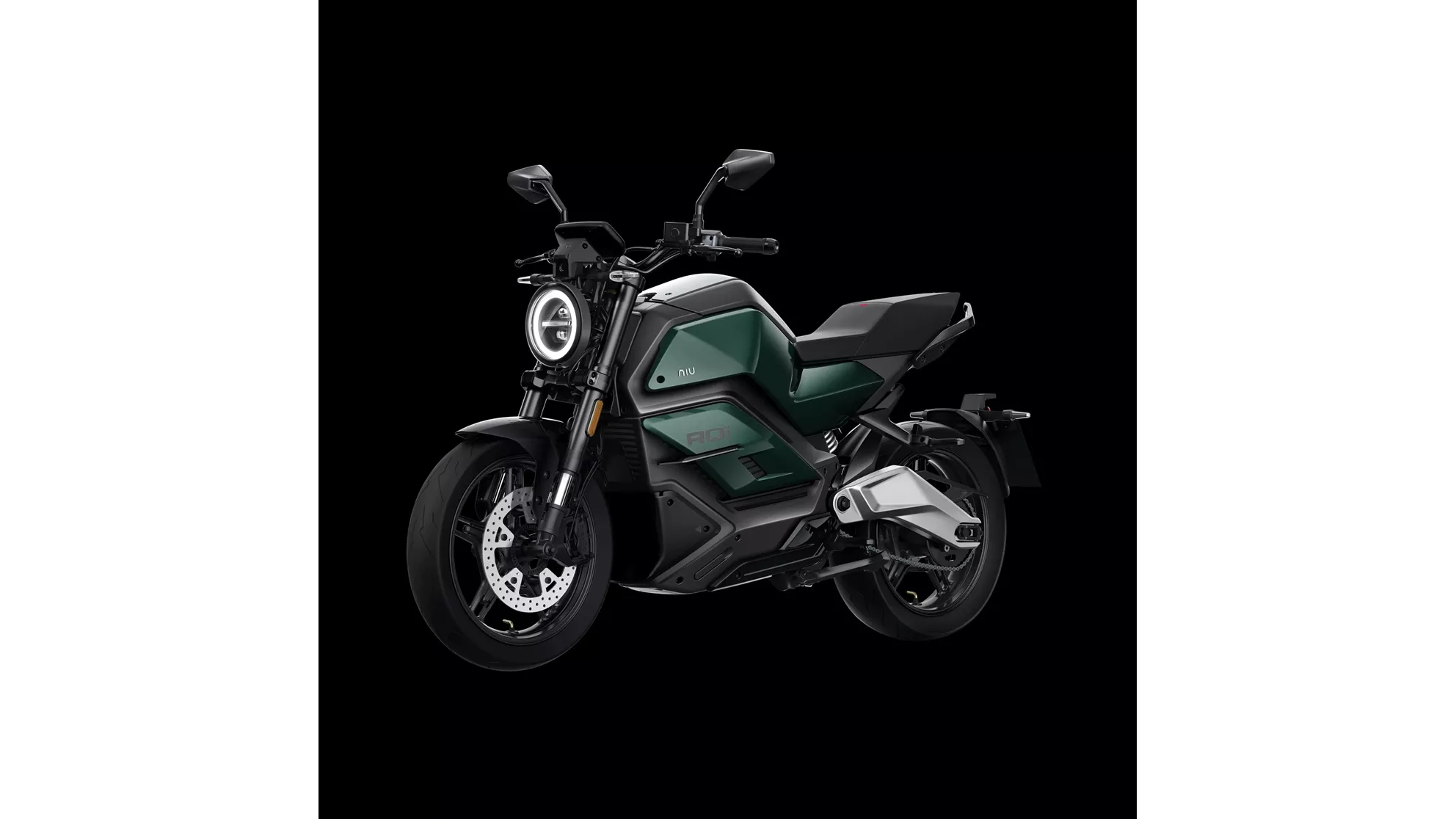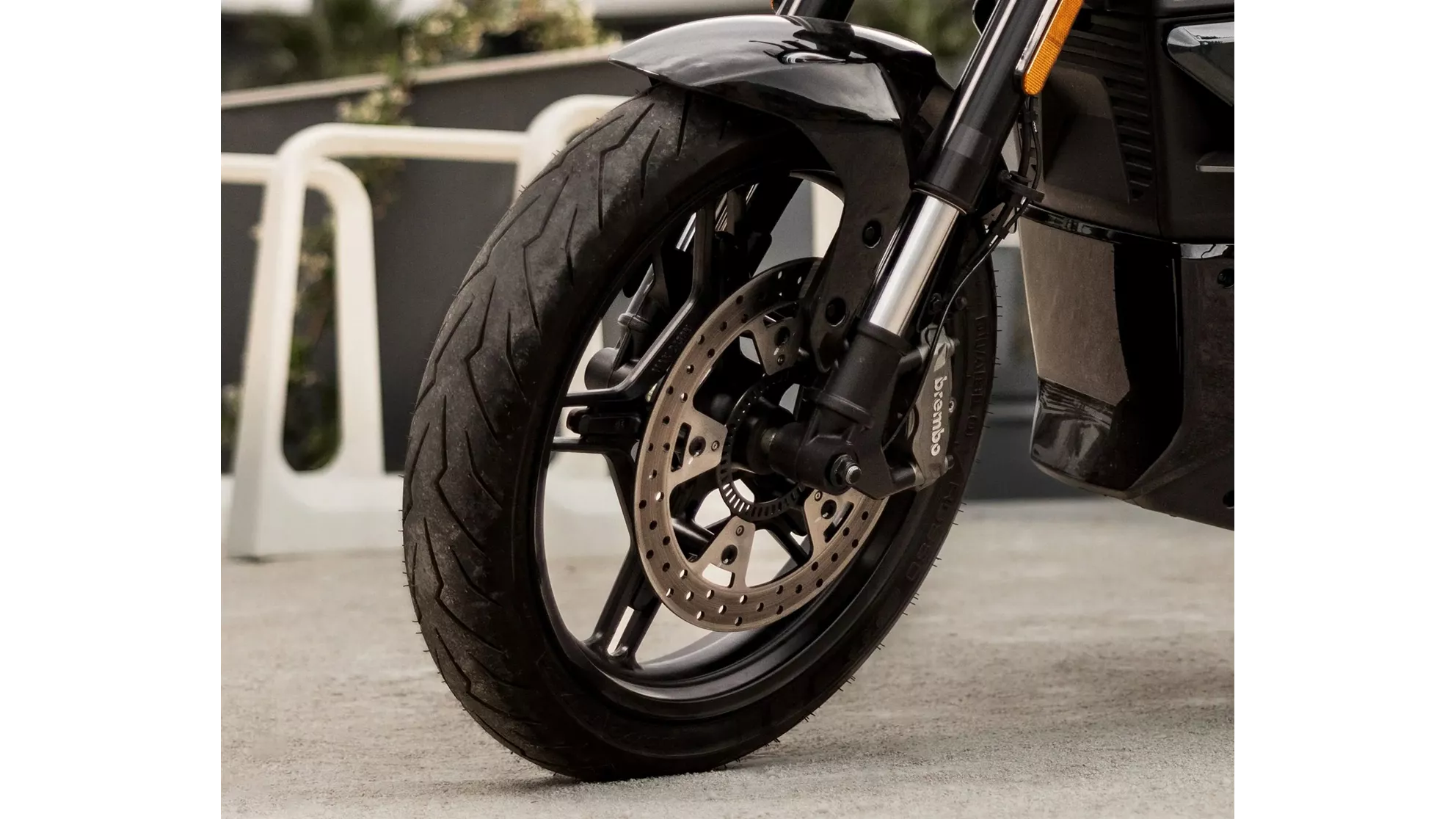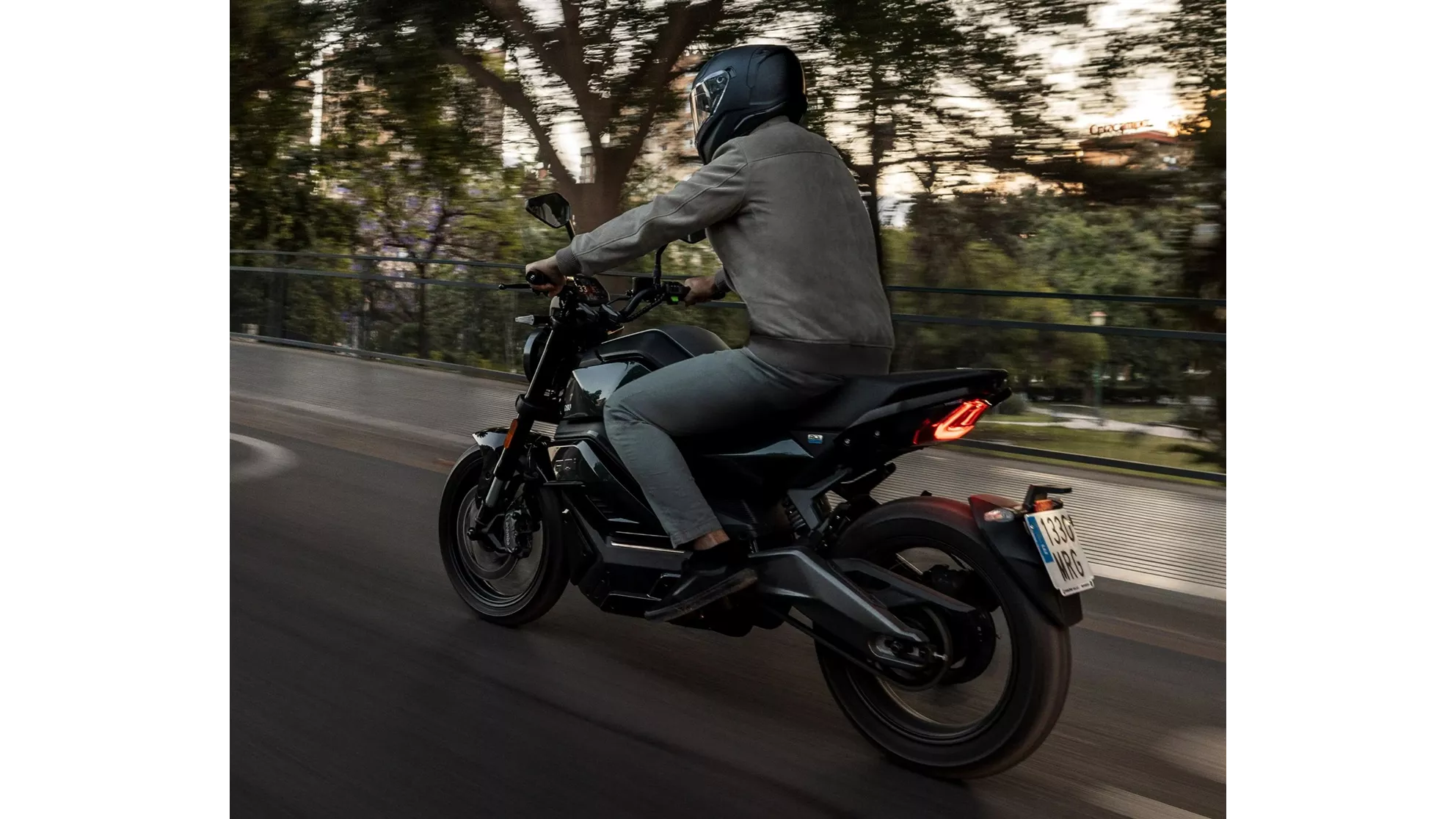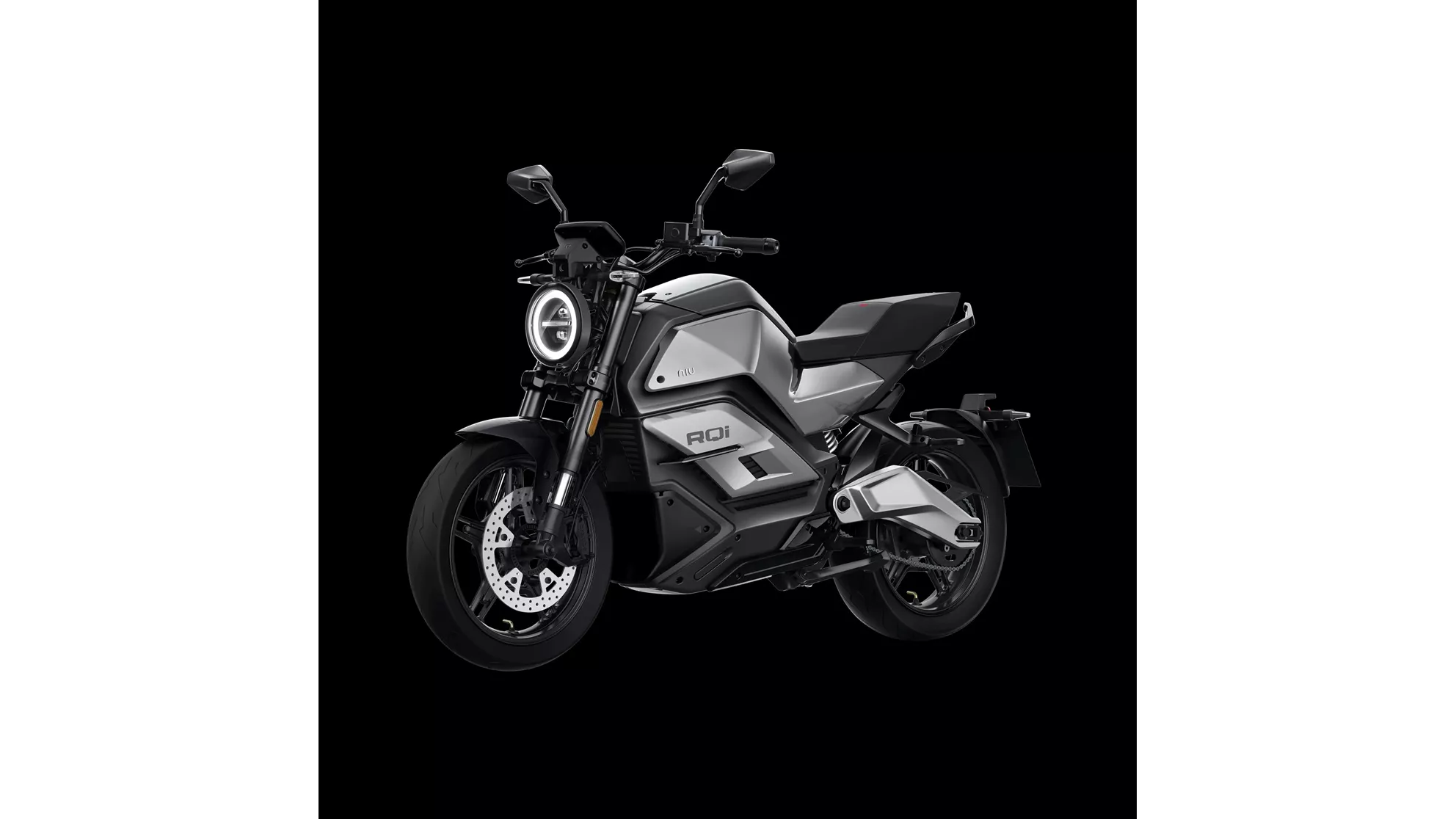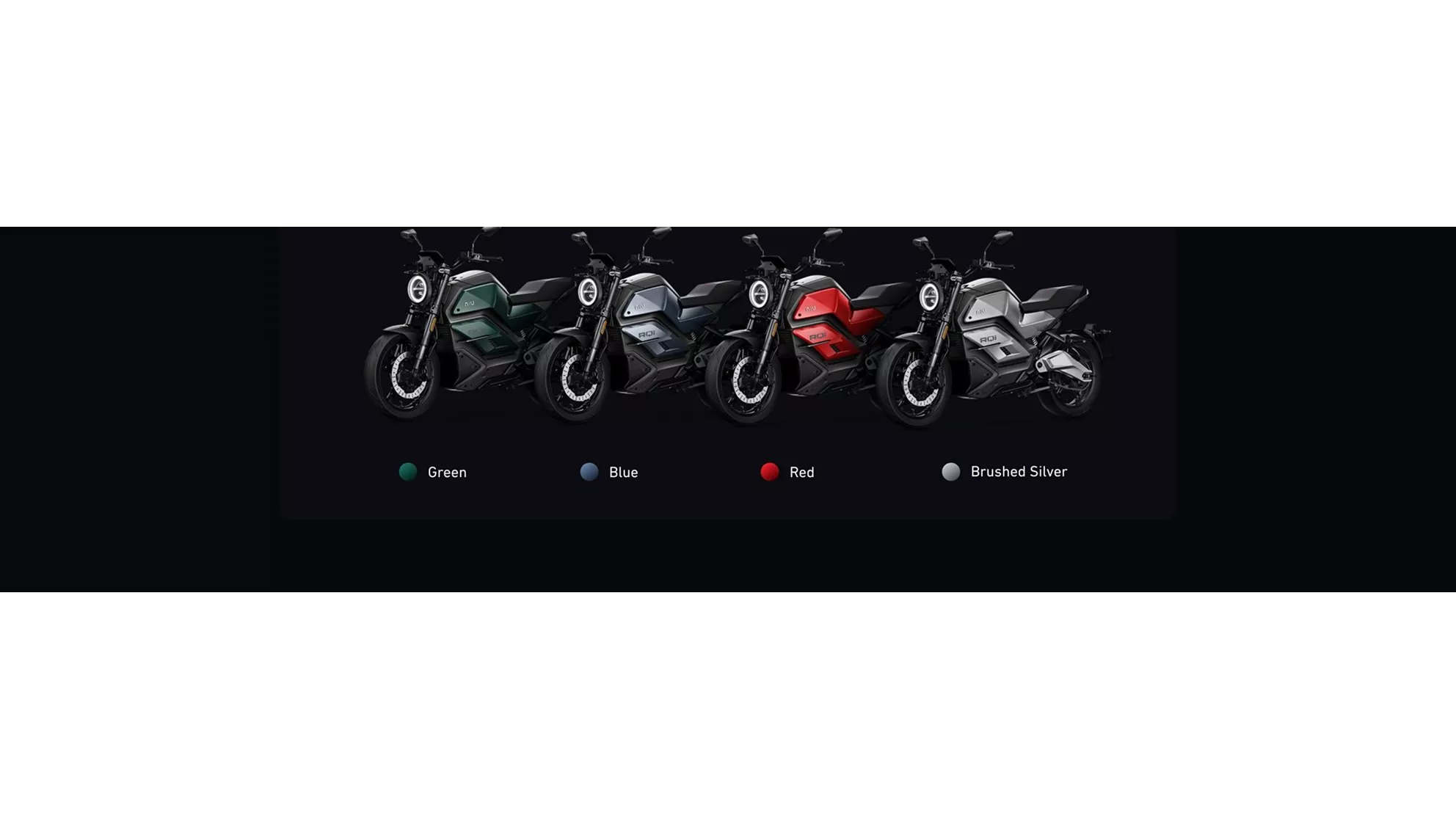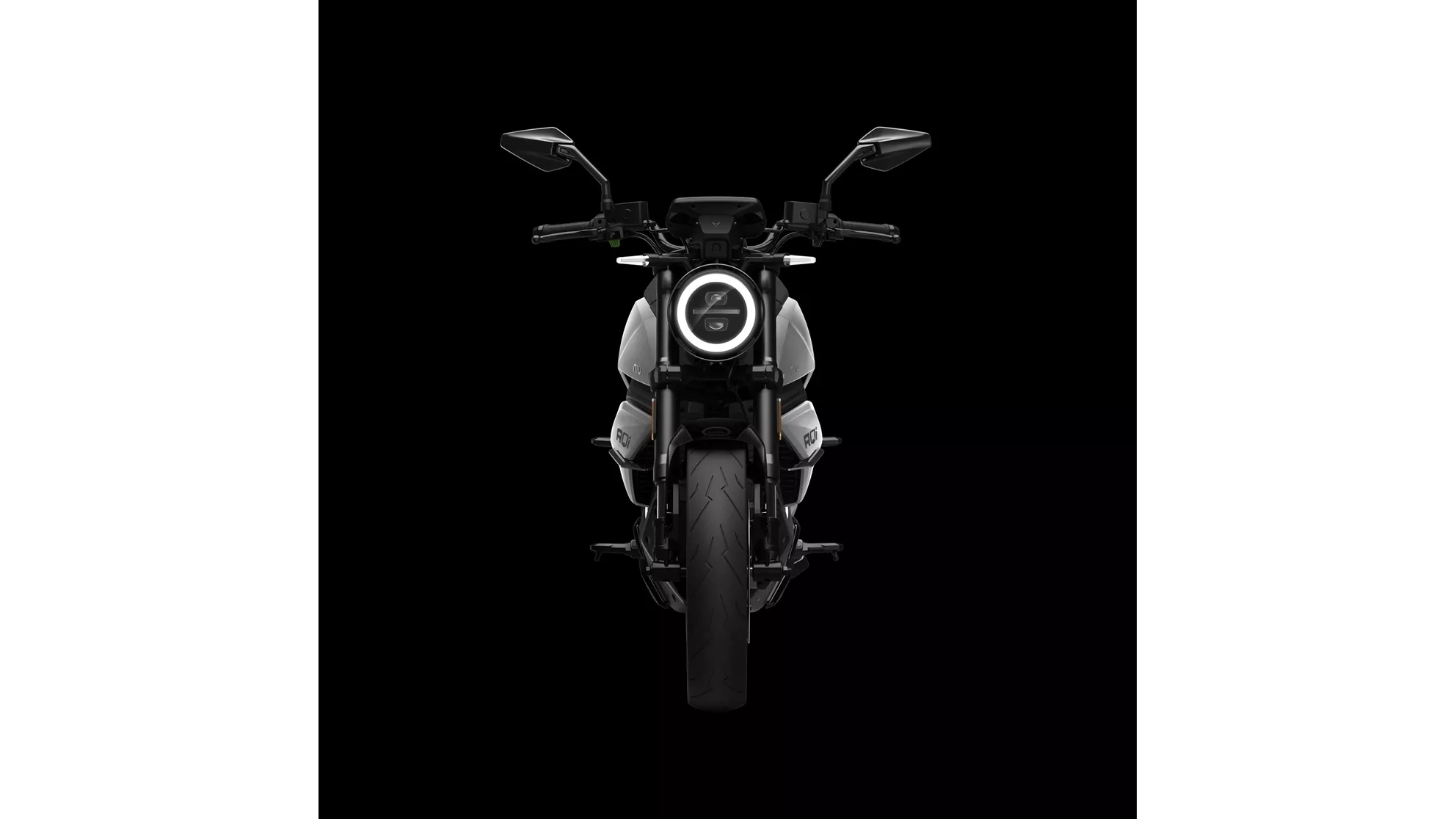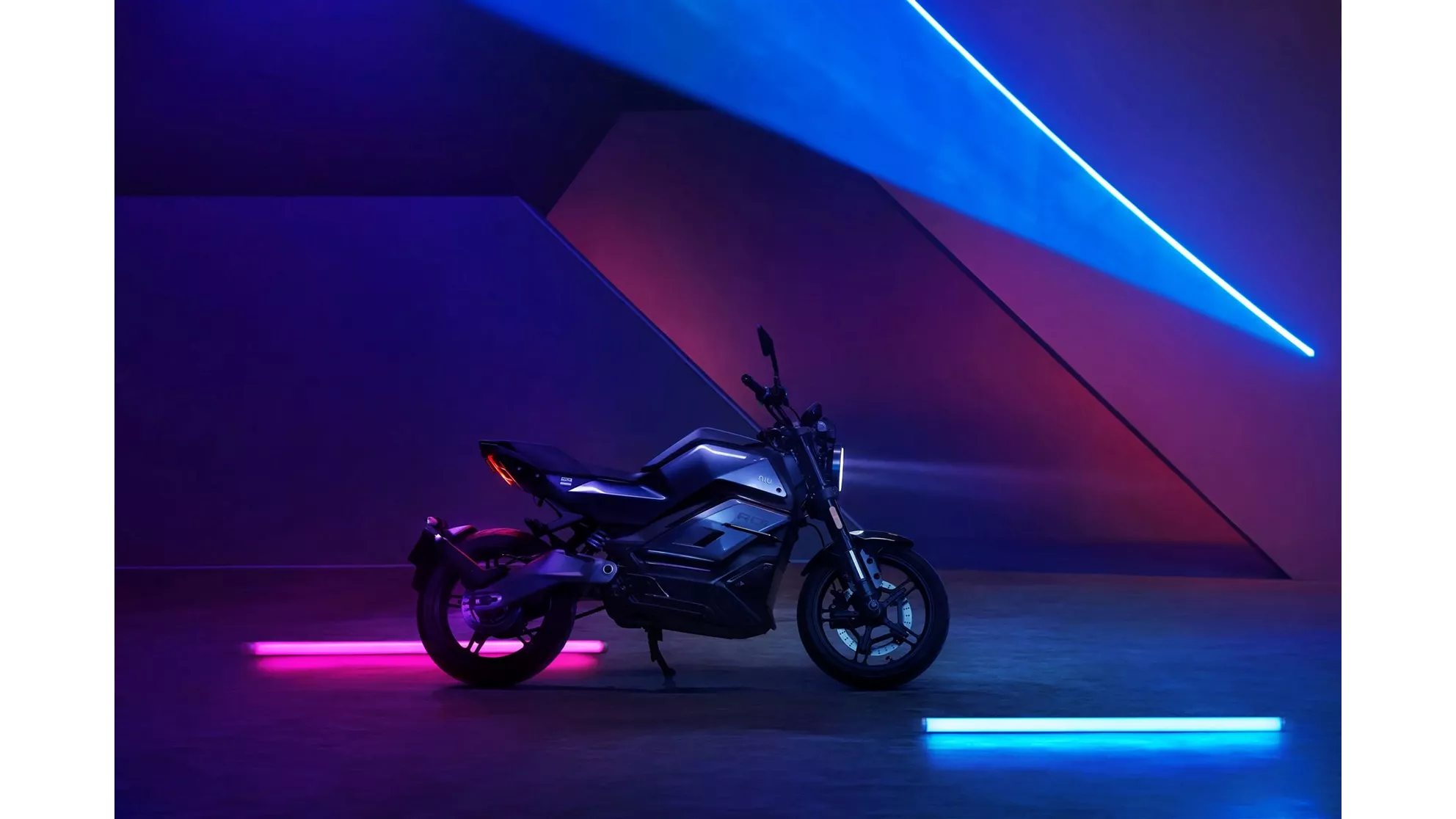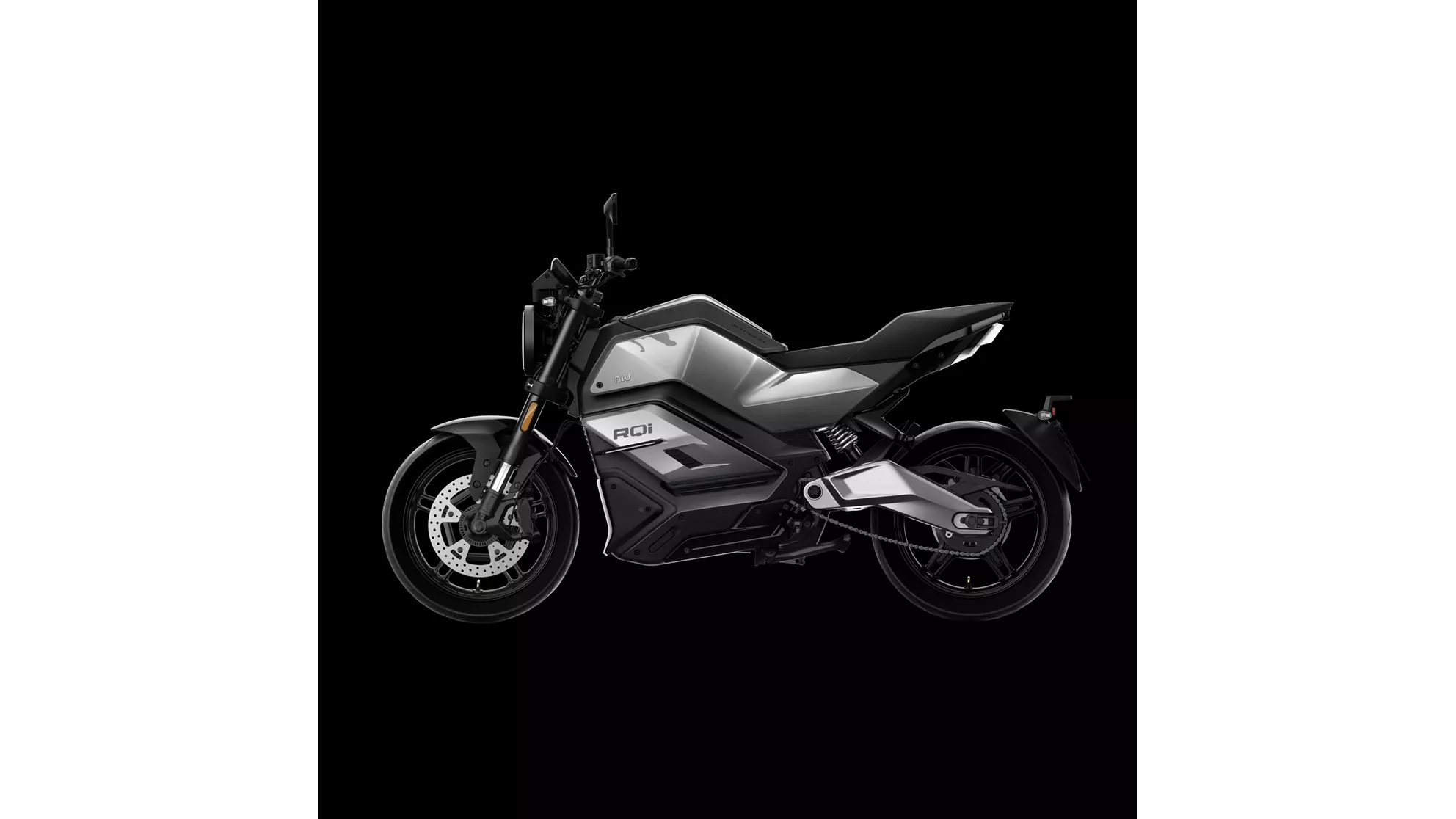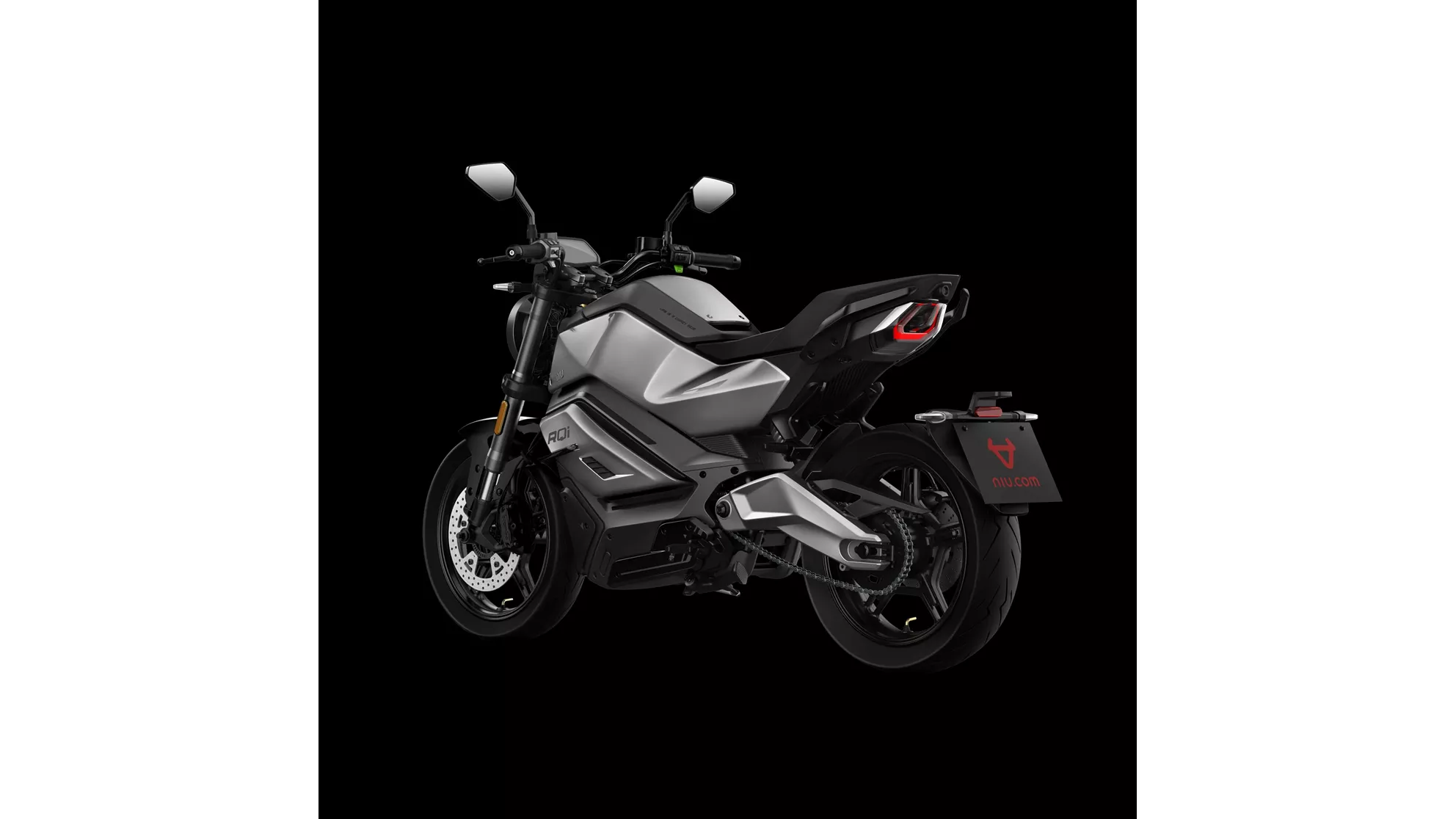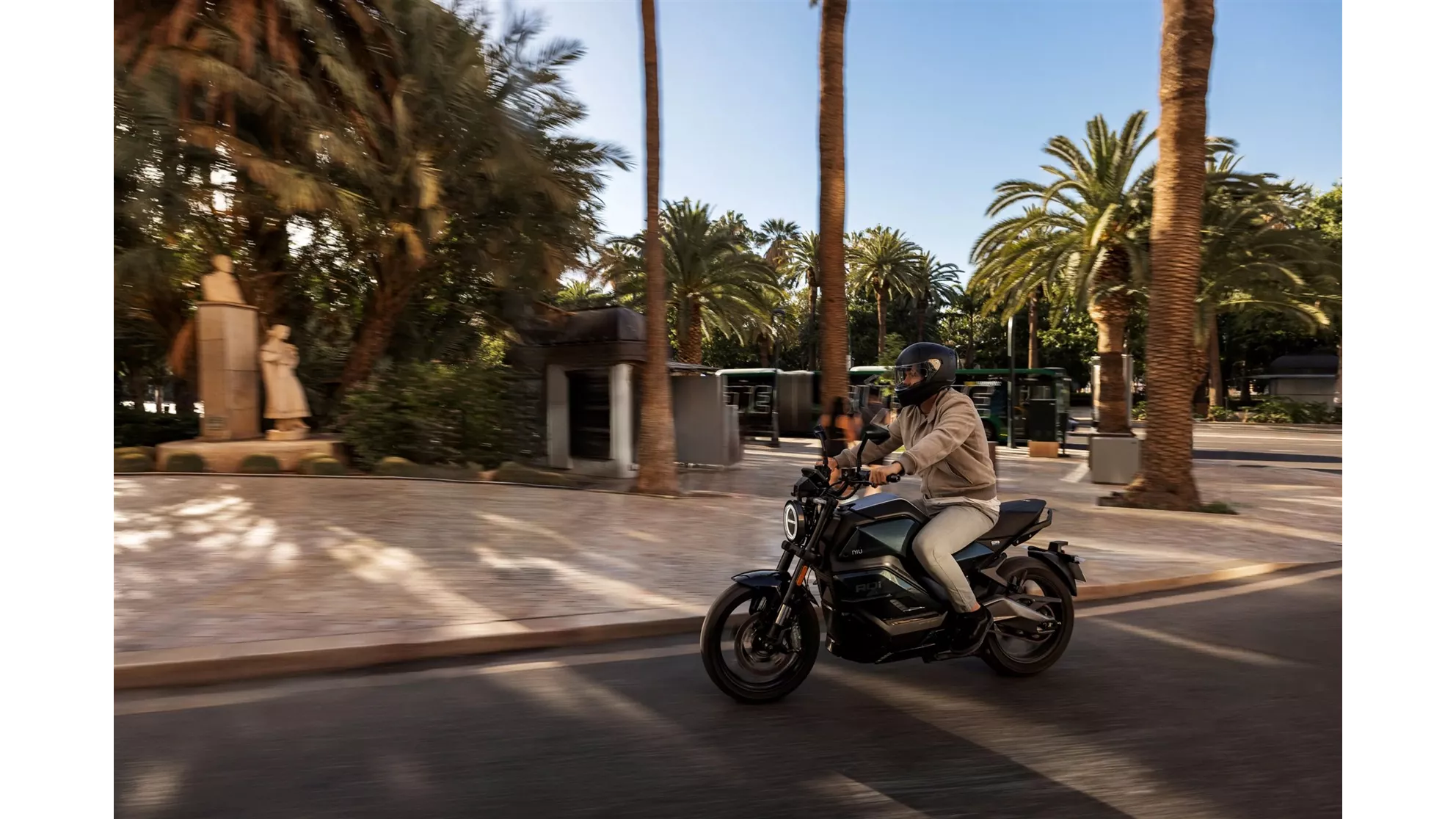With the RQi, NIU introduces an electric motorcycle that deliberately sets itself apart from typical 125cc bikes. Despite limited performance data, the RQi impresses in many areas—though it also leaves room for criticism.
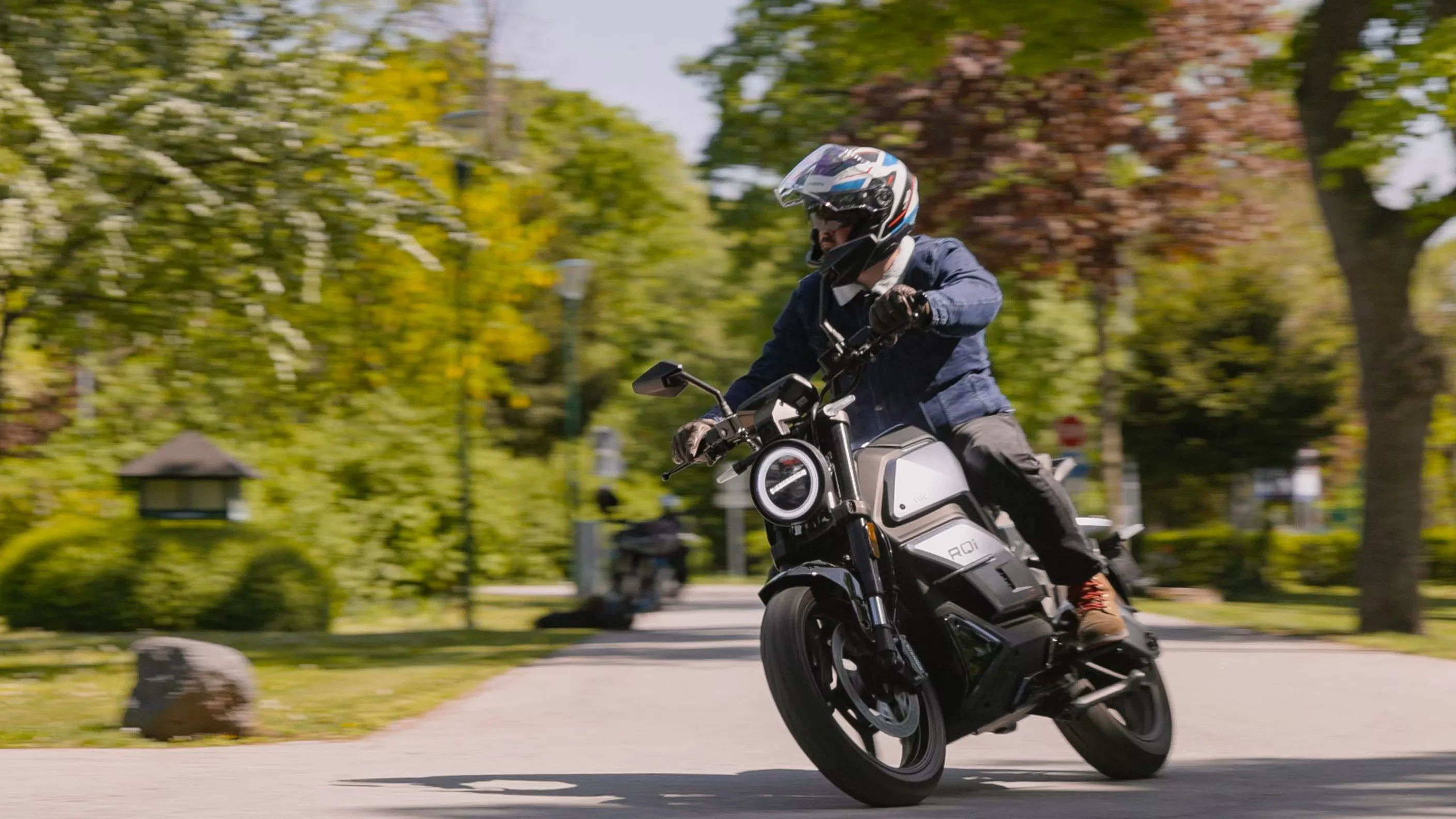
NIU RQi 2025 Review – Electric A1 Naked Bike
Range, Charging Time, Practical Use
As the only A1 motorcycle currently featuring a removable battery, the RQi targets urban commuters, tech-savvy riders, and users without a fixed garage charging spot.
&width=72&height=72&bgcolor=rgba_39_42_44_0&mode=crop)
Poky
published on 10/05/2025
NIU RQi Engine, Performance, and Riding Dynamics
The RQi is equipped with a 5-kW mid-drive motor delivering a peak power of 7.5 kW (around 10 hp), with power sent to the rear wheel via chain drive. While it doesn’t fully exploit the A1 class, its acceleration performance ranks among the top of 125cc motorcycles—particularly in lower speed ranges, where the electric drive feels livelier. Thanks to the boost function, it accelerates from 0 to 50 km/h in 2.9 seconds, according to the manufacturer. This feature, along with launch control, is only available in Sport mode.
The second mode, Dynamic, is noticeably smoother and proves to be the right choice for urban environments. According to some online sources and the official NIU website, there's mention of a third mode, E-Save. This can be misleading as it cannot be manually selected; instead, it automatically engages when battery levels drop below 15%.
The top speed ranges from 100 to 110 km/h, which can only be achieved with both batteries installed and at optimal charge. With just one battery, Sport mode is unavailable, and the bike limits speed to about 70 to 75 km/h.
The perceived speed feels lower, mainly due to the absence of engine noise and the linear power delivery, compared to combustion engines. When compared to a Kawasaki W230, an A2 bike that happened to be the camera vehicle during the test, there was no significant difference in actual speed on twisty routes or straight sections.
In dynamic riding conditions, the relatively high weight of 186.5 kg (including both batteries) is less noticeable than during maneuvering. On the test track, the performance seems adequate as long as the bike isn't constantly pushed to its power limit. The Dynamic mode offers noticeably less acceleration than Sport mode, especially above 75 km/h.
Range and Charging of the NIU RQi
The manufacturer-stated range of 95-105 km could not be achieved during testing (which involved a lot of full-throttle riding, as is typical for A1 motorcycle tests). A realistic estimate is about 70 km under mixed riding conditions, while sporty riding reduces the range to around 50 km.
Notably, the last 15% of battery capacity results in an electronically limited speed of up to 45 km/h (E-Save mode). Charging time with the included charger is approximately 6.5 to 7 hours (from 0 to 100%). Fast charging options (such as CCS) are not available; charging is exclusively via household outlets.
A unique feature is the two removable 23-kg batteries, which can be charged both in the vehicle and externally. This makes the vehicle particularly appealing to users without a fixed charging point. The "trunk" can be unlocked either by a button press or via the app. The bike can be operated with just one battery, but the range is halved, and Sport mode becomes unavailable.
NIU RQi - Ergonomics, Suspension, and Brakes
When standing in front of the RQi, you wouldn't immediately guess it's an A1-compliant motorcycle; it resembles more of an A2 bike or a 500cc equivalent. The seat height of 825 mm is comfortably accessible without one feeling out of place as a full-grown man on the RQi. Especially with a height of 1.87 meters, this can sometimes be an issue on 125cc bikes. The area adjacent to the seat—which would typically be the fuel tank on combustion bikes—takes some getting used to. With the two massive batteries positioned side by side, a tight knee grip isn't possible, and the thighs are practically pushed apart, almost like on a hefty chopper. When mounting or dismounting, one might occasionally catch the crotch of their pants on the battery compartment if not careful. The mirrors, however, are too short and offer limited rear visibility.
The seat is generously designed, providing ample space for riding with a pillion. Noteworthy are the substantial grab handles, which make the passenger's compensations during acceleration maneuvers manageable. It's all the more frustrating that the RQi's suspension isn't adjustable—the rear shock theoretically allows for preload adjustment with a hook wrench, if the seat is removed, but accessibility and the necessary adjustment range in practice are lacking. Consequently, the bike's geometry is off-balance when fully loaded.
The fork exhibits a rather wooden response, transmitting shocks quite clearly. Savings are apparent here, aligning with the level of significantly cheaper A1 motorcycles. The high vehicle weight combined with the basic suspension limits the RQi's sporty potential. The rear shock also suffers from significant under-damping, and combined with the firm seat padding and limited range, it's a reason to carefully consider extended tours on the RQi.
The brakes, on the other hand, are appropriately sized for the performance and work unobtrusively. The control levers are adjustable. Like many electric motorcycles, it lacks a clutch and foot levers—braking is done exclusively by hand. A practical issue concerns the cruise control: it does not deactivate when the front brake is applied, only when using the rear brake. This can be confusing in operation, potentially leading to unexpected acceleration and dangerous situations, and should be addressed with a software update.
NIU RQi: Premium Features and Connectivity at a Mid-Range Price
The RQi offers several intriguing electronic features often absent in much pricier motorcycles: traction control, ABS, cruise control, a crawl mode (including reverse, handy for maneuvering), and both boost and launch control functions. Traction control and ABS can only be disabled via the accompanying app. However, there's no display indicator, which is particularly questionable from a legal standpoint concerning ABS.
Through the app, the bike can be started keylessly, its location checked, and recent rides, including top speed and route, reviewed. Over-the-air updates are also available. An integrated motion alarm and cloud-based dashcam (front and rear) are included. Up to five users can receive a digital key via the app to operate the bike. The app is free for the first three years, after which it costs €50 per year.
The display shows speed, battery level, and range, and if the app is connected, also the weather. A power display up to 11 kW causes some confusion, as this exceeds the nominal maximum output. Regeneration is claimed by the manufacturer, but in practice, it is neither adjustable nor perceptible, nor is it adequately documented. The NIU RQi is available in Austria and Germany starting at €6990.
- How much does a NIU RQI Sport cost?
- Here you will find an overview of the price level of new and used motorbikes!
&width=60&height=60&bgcolor=rgba_39_42_44_0&mode=crop)
NIU RQI Sport 2025 - Experiences and Expert Review
Poky
The NIU RQi positions itself as a purely electric A1 motorcycle with an urban focus. It delivers practical performance, smart features, and a unique selling point with its removable batteries. Its strengths lie in its quiet, locally emission-free operation, digital interface, and app integration. Weaknesses include the suspension, seat comfort, and limitations in range and charging infrastructure. Those who intend to use the RQi as a commuter for short distances or as a city bike, and who can charge it at home or work, will find a well-thought-out concept with a clear purpose. However, it is less suitable for longer rides or sporty endeavors on evening runs.
NIU RQi 2025 Review – Electric A1 Naked Bike Images
Source: 1000PS

































































